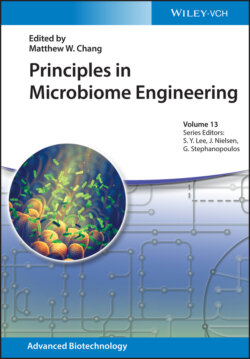Читать книгу Principles in Microbiome Engineering - Группа авторов - Страница 41
1.3.1.2 Prebiotic‐, Diet‐, and Probiotic‐Mediated Prevention of Pathogenic Infections
ОглавлениеAs discussed in the earlier subchapter 1.2, a perturbation in the gut ecosystem increases the risk of microbiome dysbiosis, significantly increasing the hosts' vulnerability to infection [163, 183]. Thus, other measures have been taken to re‐establish homeostatic balance and restore the host health. In the following, we will discuss the use of prebiotics, diet, and probiotic means of balancing the gut microbiome.
The use of prebiotic fibers has been proven to increase the localization of Firmicutes and Bacteroidetes. Studies using a non‐Westernized diet (balanced fat, sugar, and dietary fiber) found that the microbiota stability was maintained better than those with a Western diet when challenged with antibiotic treatment, preventing the proliferation and colonization of opportunistic pathogens [184]. In a separate study, mice fed with microbiota‐accessible carbohydrates (MAC) were shown to mitigate CDI through promoting the growth of MAC‐utilizing taxa, resulting in the production of beneficial metabolites such as SCFA [185].
Adjusting the dietary consumption of lipids was further found to encourage the growth of certain microbial groups by altering hepatic lipid and bile metabolism, thus indirectly changing the microbiome and their corresponding metabolites [163]. Fatty acids can alter pathogen virulence, survival, and growth; thus, clinical applications of fatty acid in infection treatment are carried out [186]. Scientists studying various dietary lipid sources influence the host's pathological response to Citrobacter rodentium infection, where olive oil showed one of the best chemoprotective properties [187].
